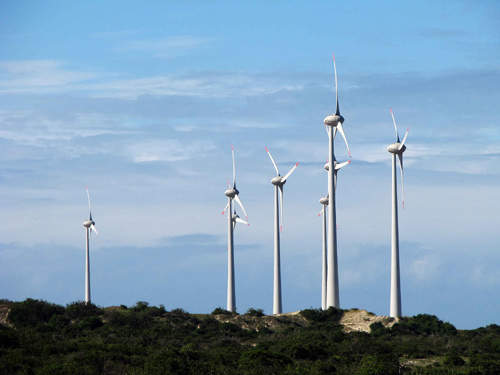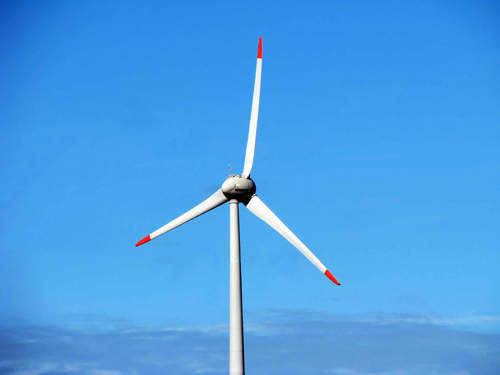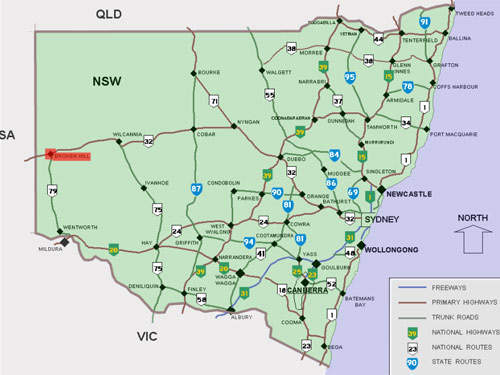The Silverton Wind Farm is a proposed wind energy project near Silverton, approximately 25km from Broken Hill, in New South Wales (NSW), Australia. The project was initiated by a joint venture (JV) between Epuron, a subsidiary of global renewable energy company Conergy, and Macquarie Capital Wind Fund.
The JV was formed in 2007 for developing, constructing and operating the wind farm. Construction of the project was scheduled to begin in the first half of 2010.
It was, however, delayed due to a lack of finance as well as technical problems. In March 2011, the JV partners announced their plan to sell the project. In March 2012, the JV handed the development rights to AGL Energy.
Scheduled to begin construction in 2017, the project will involve the construction and operation of up to 300 wind turbines. It will be one of the biggest wind farms within the southern hemisphere and among the largest in the world, with a planned capacity of more than 1,000MW. It will generate 200MW upon completion of the first phase.
The project was acquired by Powering Australian Renewables Fund (PARF), a partnership between AGL, QIC and Future Fund, in January 2017.
Wind farm location north-west of Broken Hill
Silverton wind farm is proposed to be built at Barrier Ranges, roughly 25km north-west of Broken Hill, NSW. The turbines will be placed throughout the Mundi Mundi range in the southern portion of the site and Mt Robe in the northern portion of the site.
The development is planned in two phases. The first phase will include the construction of 58 wind turbines. It is expected to generate 200MW of green energy, which will be sufficient for around 137,000 households. As of March 2011, the estimated cost of the first phase stood at approximately $1bn (€800m).
The second phase of the project will add another 240 wind turbines with a capacity of 800MW.
Transmission line and TransGrid substation connections
The planned wind farm project also included the laying of electricity transmission power lines. The first phase involved the construction of a 25km transmission line connecting the wind farm to the TransGrid substation at Broken Hill.
The electrical transmission line was built at a higher capacity than actually required for the project. In March 2010, the development team announced it would determine the effective size of the transmission and resize all the construction stages. There has been no further development on the project as yet.
The proposed 300km transmission line for phase two will connect the wind farm with the Red Cliffs substation in Victoria, passing through Broken Hill.
Development of AGL Energy’s wind farm
The first part of the environment and engineering investigation for the wind farm was completed in September 2008, and an environmental assessment seeking project approval was submitted to the NSW Department of Planning.
In June 2009, the government of New South Wales granted approval for the first phase of the Silverton project.
On 30 June 2009, a lease agreement was signed by the government to secure jobs and investment in western NSW. It is one of the major steps in securing the development of the largest farm in the southern hemisphere, which will be built on 32,000 hectares of crown land.
The approval from existing leases provides a way for a parallel lease to be entered into between lands and the developer, therefore providing the security of tenure the development requires for its $2.2bn development.
The project is expected to provide around 800 jobs for western NSW during the five-year construction period and up to 120 jobs when operational, along with $2.2bn in investment and green energy to three states.
Local environmental impact of the Silverton project
The Silverton wind farm development would minimise adverse local impacts and maximise the benefits of the project to the local community. It would reduce greenhouse gas emissions by around 3.5 million tons of carbon dioxide a year, which would be equivalent to taking 700,000 cars off the road.
The project promises to save portable water consumption by approx 4,600 million litres a year.
It will result in annual savings in pollution from coal-fired power stations of up to 18,760t of sulphur dioxide, 8,365t of nitrogen oxide and 535,000kg of particulates. It is also expected to inculcate around $701m into the regional economy.
Contractors involved
AGL signed an agreement with GE and CATCON to construct the wind farm in January 2017.
Parsons Brinckerhoff secured a contract to supervise a preliminary geotechnical investigation programme for the project.
Power market in New South Wales, Australia
The Silverton Wind Farm is expected to be a major contributor to the federal government’s expanded target of 20% of renewable electricity generation by 2020.
If developed, the wind farm will supply around 3,500GWh of clean, renewable electricity for more than 430,000 regional homes, while reducing greenhouse gas emissions in NSW by 3.5 million tons a year.
Electricity generation by the project will be equivalent to around 4.5% of NSW’s current energy requirements and would provide roughly 10% of renewable energy required under the federal government’s proposed expansion of the mandatory renewable energy target of 20%, which is currently 2%.






